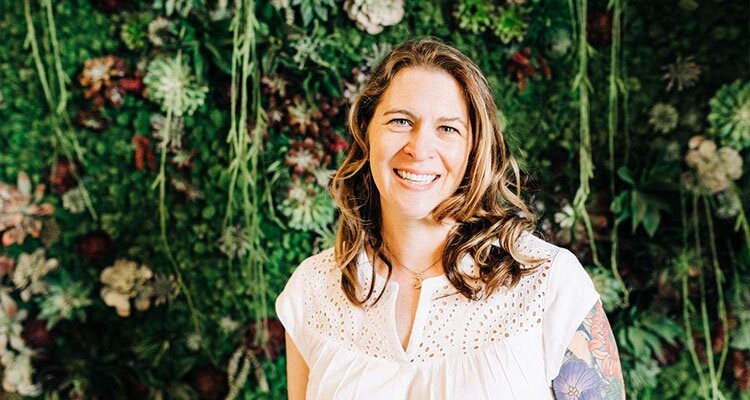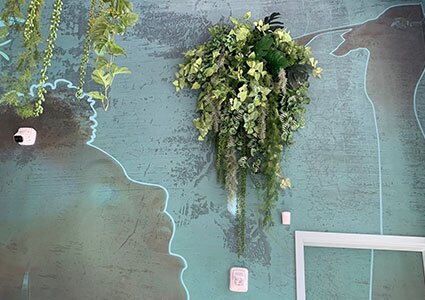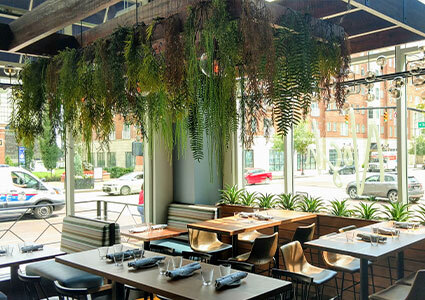
Although urbanization has its perks, staying in touch with our roots might not be one of them. However, biophilic design might be the solution, writes Genevieve Reiner
If you’re working in the design and construction industry, chances are, the phrase ‘biophilic design’ has floated across your radar in conversations about landscapes, interior design, or building amenities.
The concept of biophilic design is rooted in the idea of biophilia. Biophilia means ‘love of living systems’ and is a concept dating from the 1960s that describes humanity’s intrinsic and innate attraction to the natural world.
 Biophilia suggests that humans have a biological need for connecting with nature on physical, mental, and social levels, and that this connection affects our personal wellbeing, productivity, and societal relationships. Over the last several decades, hundreds of scientific studies have been conducted to demonstrate that humans do in fact have an innate attraction to nature.
Biophilia suggests that humans have a biological need for connecting with nature on physical, mental, and social levels, and that this connection affects our personal wellbeing, productivity, and societal relationships. Over the last several decades, hundreds of scientific studies have been conducted to demonstrate that humans do in fact have an innate attraction to nature.
This complex, intrinsic relationship exists because for 95 percent of our evolutionary history, humans have lived in and amongst nature, becoming hardwired to respond to the stimuli of our natural surroundings. It has only been in the last 200 years of human existence that we have moved into cities and urban areas, and away from close interactions with nature.
We spend 90 percent of our life indoors, and our bodies and mental states reflect the fact that we are displaced from the natural world. Modern urbanization has brought many positive outcomes, but some negative ones as well, such as stress, crime, absenteeism, and depression.
Biophilia and biophilic design is the idea that we can still live in our urban centers, but we need to design the natural world into our built environments. When we are exposed to nature, there is a measurable, physical change that happens in our bodies. Research shows that interaction with nature regulates our nervous system and increases the response of our parasympathetic system, the system that relaxes our bodies. When this system is engaged, our bodies feel comfortable, safe, and secure in our surroundings. And when that happens, our blood pressure lowers, our heart rate slows, we feel calmer, and we can focus and concentrate. Spending time around plants also has been demonstrated to increase our productivity, lower stress and anxiety, and improve our mood.
At a practical level, biophilic design can be incorporated in various ways. The most impactful means is through living plants, water features, and even animals. The second way is through biophilic analogs: these are patterns taken from nature (plant-patterned wallpaper, fabrics with nature-inspired designs), building or furniture materials (wood, bamboo, natural stone), or even images of landscapes.
The third way to incorporate biophilia is through the design of a space itself. Humans evolved to live in wide open, savannah-like spaces, where we could seek refuge in groups of trees or other protected areas, while still being able to view our surroundings. In the modern world, this translates to open spaces that aren’t divided into tiny rooms, but instead have nooks or corners to take a break or rest.
If you’re old enough, you may remember the fake, sad, dusty, silk plants propped in office corners, or the occasional under-loved living plant languishing in a cubical farm. The plant trends today are far more dynamic, designing plants into spaces and not just relegating them to corners and hallways.
Want to bring some biophilia into your space? Live plants can be incorporated in many ways:
- Group more than one plant for greater visual impact: two-to-five plants of different heights and textures creates a more striking experience.
- Plant containers are more than just plastic or standard terracotta. There are beautifully textured fiberglass and fiberclay, or fiberstone products, which look like concrete or stone but weigh much less, and they’re available in an array of colors and sizes. Matte finishes are also very on trend, as are using plant stands to create different elevations.
- Planters built into furniture are a great way to incorporate plants into a space; benches with planters behind them, tables with space in the middle for miniature gardens, open shelves with plants on them to act as an attractive room divider.
- Plant walls are great when floor space is lacking. These can be hard-wired into plumbing and drains, or set up to be watered every two-to-four weeks using reservoirs. Overhead lighting ensures that they can stay healthy, and plants can be installed to reflect styles or even seasons.
Can’t use live plants? That’s absolutely fine. There are trendy alternatives available that still pack some biophilic punch. Moss walls are one example. These are made of preserved, formerly living mosses and can be designed to look like pieces of art, cover unsightly walls, incorporate corporate colors or logos, and integrate other natural elements like faux plants, driftwood, stone, and more. They can be curved around columns, flush against walls, or even suspended from ceilings.
There is also the option to use replica or faux plants. By these, I don’t mean your grandmother’s fake plants! Replica plants have evolved, and they can frequently be confused with the real thing. Replica plants are great for areas that are hard to reach or maintain—up high on ledges for a ‘hanging garden’ look, in interior rooms that lack natural light, or places where maintaining clean or sterile environments is an important concern. The ideas governing living plant design still hold true for replica plants: use them in groups with different heights and textures and incorporate florals to bring a pop of color. Unlike live flowers, replica florals last a long time.
Plant ceilings, made of hanging replica plants, are also very trendy. They create a cozy atmosphere in a room, lowering ceiling heights and help absorb sound.
There are endless ways to incorporate nature into your space and bring the benefits of biophilia into our built environments. Get inspired, get creative, and together, we can make the places we live, work, and play into life-filled areas of beauty.
Genevieve Reiner Mills
www.oaklandgreeninteriors.com
Genevieve Reiner Mills is Director of Oakland Green Interiors and COO of Oakland Nurseries in Columbus, OH. Oakland Green Interiors has been providing custom biophilic design solutions for over 40 years, creating beautiful spaces and bringing us closer to nature. For moe information, visit oaklandgreeninteriors.com or see their work on Instagram @oaklandinteriors.